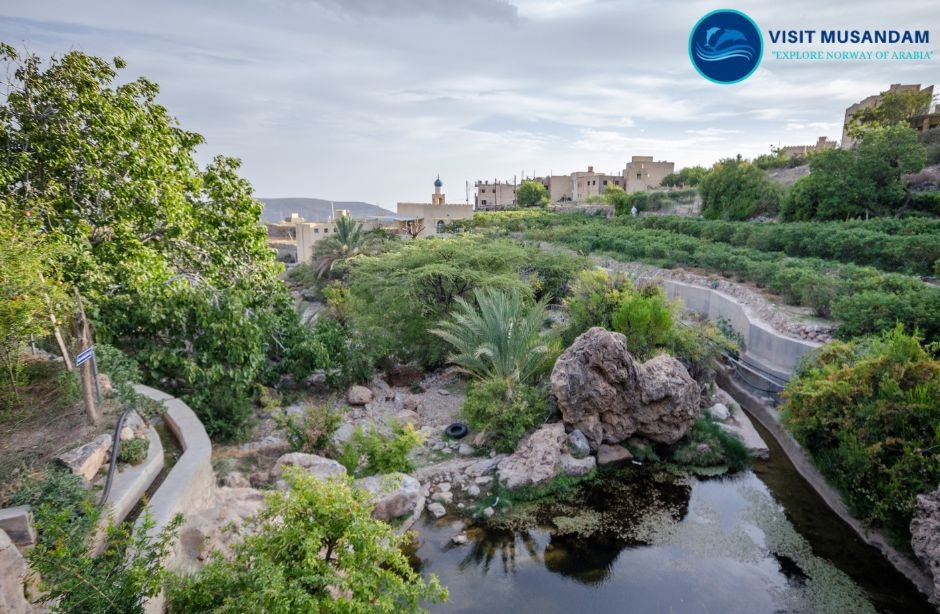
Musandam’s hidden villages and islands represent a unique cultural tapestry, offering glimpses into lives shaped by tradition and nature. These locales boast rich histories, from ancient fishing methods to enduring customs, reflecting a deep connection to the sea and mountains.
As you wander through these charming places, enjoy the local cuisine, featuring fresh seafood enhanced with aromatic spices, a true testament to the region’s culinary heritage. Each meal tells a story of the land’s bounty and the people’s way of life.
Why do these hidden gems matter? Understanding their cultural significance enhances our appreciation of heritage and sustainable practices in today’s fast-paced world.
Why Are Musandam’s Hidden Villages and Islands Special?
Musandam’s hidden villages and islands are special due to their stunning natural beauty, rich cultural heritage, and unique geographical features. These areas, like Khasab and the Musandam Peninsula, offer breathtaking fjords and rugged mountains, making them a paradise for nature lovers and adventure seekers. If you’re planning a trip to this breathtaking region, consider starting with a Musandam tour from Dubai for a seamless travel experience.
The villages showcase traditional Omani architecture and a way of life that has remained largely unchanged for centuries. The isolation of these communities has preserved their customs, providing visitors with an authentic cultural experience. For a deeper dive into the cultural and historical sites, you can explore 3 Cultural and Historical Sites in Musandam.
Moreover, the marine life around Musandam is diverse, attracting snorkelers and divers enthusiastic to explore its vibrant coral reefs and abundant marine species. To discover more about the underwater adventures, consider reading about Kayaking in Musandam: Explore the Fjords by Water.
1- Sham Village
Sham Village is a picturesque settlement located in the Musandam Peninsula of Oman. Nestled amidst stunning mountains, it features traditional Omani architecture and offers a glimpse into the region’s rich heritage. The village is renowned for its date palm plantations and terraced fields, cultivated by local farmers.
Visitors to Sham Village can experience its serene atmosphere, friendly locals, and breathtaking views. The village is also a gateway for exploring nearby attractions, including the stunning fjords of Musandam, making it a perfect destination for both culture and nature enthusiasts. For more on Sham Village, visit Sham Village: A Remote Oasis in Musandam.
2- Seebi Island
Seebi Island, located in the Musandam Peninsula, is renowned for its stunning natural beauty and diverse marine life. This small island, surrounded by azure waters, is perfect for snorkeling and diving, attracting adventure enthusiasts. If you are interested in diving, you might want to explore Musandam Diving for an unforgettable underwater experience.
The island features pristine beaches and idyllic landscapes, making it an ideal spot for relaxation and exploration. Visitors can also enjoy the vibrant local culture, with opportunities to interact with the friendly residents and taste traditional cuisine. Discover more about this gem at Seebi Island: A Hidden Gem in Musandam.
3- Haffa Beach
Haffa Beach is a stunning destination in Musandam, Oman, known for its pristine white sands and crystal-clear waters. This beach offers visitors a tranquil escape, perfect for swimming, sunbathing, and relaxation. The surrounding mountains enhance its natural beauty, providing a picturesque backdrop.
Additionally, Haffa Beach is popular for water activities such as snorkeling and kayaking, allowing guests to explore the vibrant marine life. Facilities like restaurants and cafes are nearby, ensuring a comfortable experience for all visitors.
4- Fishing Village
Fishing villages in Musandam are vibrant communities, primarily relying on traditional fishing methods. These villages, such as Kumzar and Dibba, showcase a lifestyle centered around the rich marine resources of the region. The inhabitants engage in fishing for various species like grouper and mackerel, which are staples in their diet and economy.
The fishing culture in Musandam has deep historical roots, with techniques passed down through generations. Local fishermen utilize dhows, and traditional wooden boats, for their excursions. This practice not only sustains their livelihoods but also preserves cultural heritage. To learn more about these communities, visit Fishing Village in Musandam: A Glimpse into Traditional Coastal Life.
Today, fishing villages face challenges from modern fishing practices and environmental concerns. However, efforts are underway to promote sustainable fishing and protect marine ecosystems, ensuring these communities can thrive while maintaining their unique way of life.
5- Zeke Strait
Due to its strategic location, the Zeke Strait is significant for regional shipping routes, facilitating trade between the Gulf states and beyond.
6- Kumzar Village
Kumzar Village is a secluded gem located in Musandam, Oman, known for its stunning coastal scenery and rich cultural heritage. Surrounded by rugged mountains and crystal-clear waters, it offers visitors a glimpse into traditional Omani life, characterized by fishing and agriculture.
The village is accessible only by boat, which adds to its charm. Kumzar’s unique dialect and customs reflect its historical isolation, making it a fascinating destination for cultural enthusiasts. The community is tight-knit, with residents often engaging in traditional crafts and fishing practices. More about Kumzar can be found at Kumzar Village: A Hidden Cultural Gem in Musandam.
What Cultural Traditions Exist in These Remote Areas?
What cultural traditions thrive in the remote villages and islands of Musandam? The following list highlights these unique practices that showcase the rich heritage of these isolated communities.
- Dhow Building: Dhow building is an age-old craft in Musandam, where skilled artisans construct wooden boats using traditional techniques. This practice, essential for fishing and trade, highlights the region’s strong maritime heritage, passed down through generations.
- Khareef Festival: The Khareef Festival, celebrated annually, is a vibrant event that showcases local arts, crafts, and cuisine. This festival fosters community spirit and cultural exchange, featuring music, dance, and traditional games that engage both residents and visitors.
- Falconry: Falconry is a cherished sport in Musandam, symbolizing nobility and skill. Locals train these majestic birds and participate in competitions that honor their hunting abilities, reflecting deep-rooted traditions and pride in their cultural heritage.
- Traditional Weaving: Weaving is a vital cultural practice where women create intricate textiles with traditional looms. These handwoven pieces, often decorated with local designs, serve both practical purposes and as valuable cultural artifacts, enriching the local economy.
- Ramadan Celebrations: During Ramadan, communities in Musandam gather for nightly prayers and breaking fast, emphasizing family connections. Traditional dishes are prepared, showcasing the region’s culinary heritage and reinforcing the importance of shared meals during this sacred month.
- Coffee Rituals: Serving Arabic coffee is a treasured tradition in Musandam, representing hospitality. The careful preparation and presentation of coffee, often paired with dates, encourage social interactions and strengthen community bonds, highlighting cultural warmth.
These cultural traditions in Musandam’s hidden villages and islands illustrate the resilience and richness of local heritage, fostering understanding and appreciation for the unique lifestyles found in these remote communities.
Conclusion
Traveling through the hidden villages and islands of Musandam reveals a vibrant culture that enriches the experience. Each community showcases unique customs and traditions, highlighting the deep-rooted heritage of the locals. Engaging with residents provides personal stories that enhance your understanding of their way of life.
Understanding the significance of these cultural practices is crucial for appreciating Musandam’s identity. By immersing yourself in local festivals and trying traditional dishes, you support the preservation of these communities and their traditions. This engagement fosters a connection that transcends mere tourism.
To fully appreciate Musandam’s beauty and culture, plan your visit during the cooler months for a comfortable experience. Remember to converse with locals and explore their stories, as these interactions create lasting memories and deepen your journey. Are you ready to uncover the rich heritage of Musandam? For more comprehensive information to plan your Musandam trip, visit Musandam Oman.
